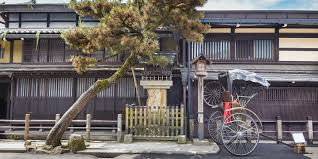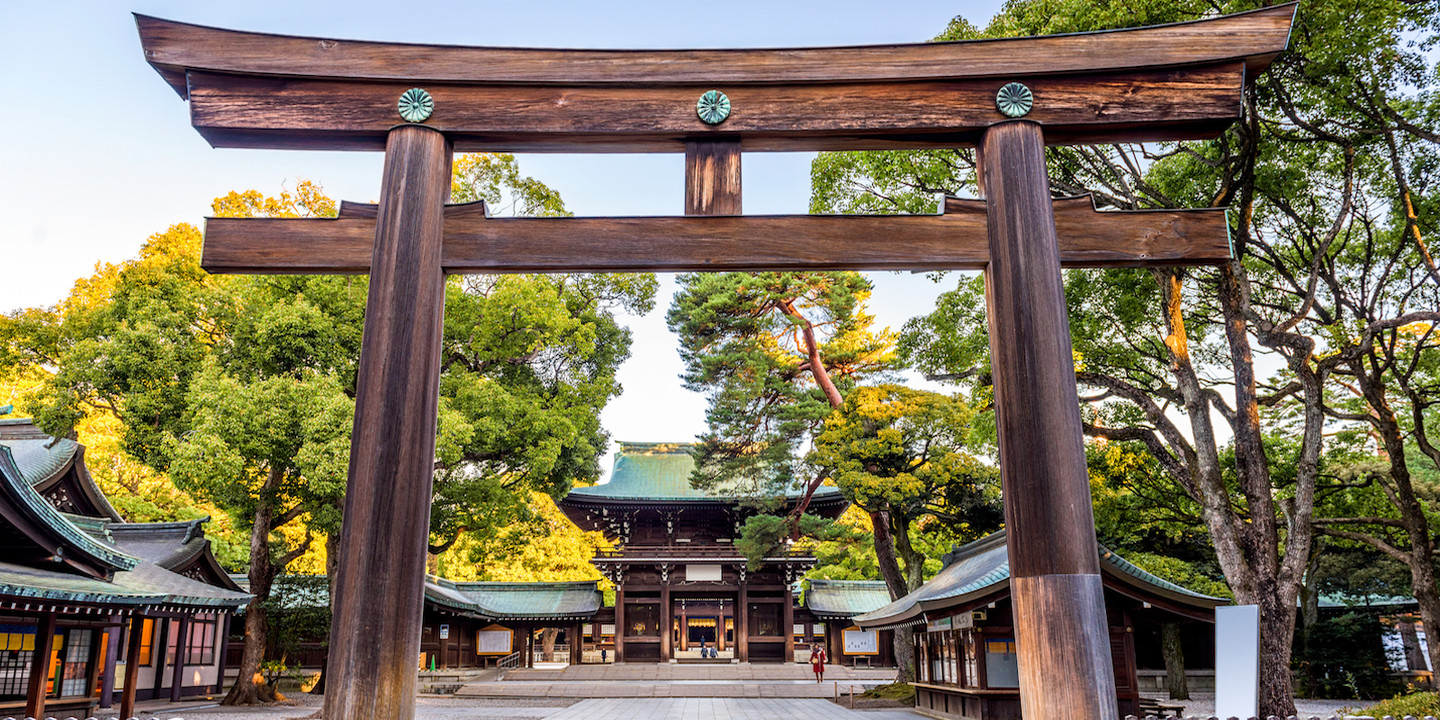Japan is a land where ancient traditions blend seamlessly with modern innovations. It captivates visitors with its stunning landscapes, bustling cities, and rich cultural heritage. From the serene temples of Kyoto to the neon-lit streets of Tokyo, each corner reveals a story waiting to be discovered. Among Japan’s many treasures are three iconic pillars that define its essence: Samurai history, unique culture, and exquisite cuisine.
Delve into this enchanting journey as we explore the legendary samurai warriors who shaped society, uncover vibrant customs that celebrate life’s beauty, and savor mouthwatering dishes that tantalize the taste buds. Join us in experiencing Japan through these three iconic treasures!
Table of Contents
The allure of Japan and its rich history, culture, and cuisine
Japan has a long and fascinating history, dating back thousands of years. From ancient traditions and customs to modern technology and fashion, Japan offers a blend of old and new that is both unique and captivating.

One of the most alluring aspects of Japan is its rich cultural heritage. Traditional arts such as calligraphy, flower arranging, and tea ceremony are still practiced today, preserving the country’s ancient customs. The country also boasts a vibrant pop culture scene with anime, manga, and J-pop music gaining international popularity.
In addition to its cultural attractions, Japan is known for its delicious cuisine. From sushi and ramen to tempura and yakitori, Japanese food is renowned worldwide for its fresh ingredients, intricate preparation methods, and beautiful presentation.
Another draw for visitors is the country’s stunning natural beauty. From the snow-capped peaks of Mount Fuji to the cherry blossom trees in springtime, there are countless breathtaking landscapes to explore.
Furthermore, this modern cities offer a dynamic mix of traditional architecture and cutting-edge technology. Walking through the bustling streets of Tokyo or Osaka can be an overwhelming yet exhilarating experience as you take in the neon lights, high-rise buildings, and bustling crowds.
Samurai History: Tracing the roots of the legendary warriors
The samurai, a symbol of rich warrior tradition, emerged in the 12th century. These skilled fighters were originally employed by powerful landowners to protect their estates.
As feudal society evolved, so did the role of samurai. They became not just warriors but also influential figures in politics and culture. The rise of the shogunate system solidified their status.
Key historical events shaped this class. The Genpei War marked a turning point, ushering in centuries of samurai dominance. Figures like Minamoto no Yoritomo and Tokugawa Ieyasu played pivotal roles.
However, as Japan modernized during the Meiji Restoration in the late 19th century, traditional values clashed with new ideologies. The samurai class gradually faded into history but left an indelible mark on its identity and cultural heritage that resonates even today through art and literature.
– The rise and fall of the samurai class
The samurai class emerged in the late 12th century during Japan’s feudal era. Initially, they were skilled warriors serving noble families. Their role evolved as they became crucial to maintaining peace and order across the land.
With loyalty and honor at their core, samurai followed a strict code called Bushido. This way of life defined their actions, emphasizing discipline and bravery. They transformed into symbols of power and prestige.
However, by the 19th century, significant changes began to unfold. The Meiji Restoration marked a dramatic shift in Japan’s political landscape. The samurai lost their status as modern military forces rose.
As firearms replaced swords on the battlefield, the traditional warrior faced an uncertain future. The once-mighty samurai found themselves navigating a rapidly changing world that rendered their skills less relevant than before.
– Key historical figures and events
Key historical figures shaped the samurai legacy, leaving an indelible mark on Japan’s history. One notable figure is Minamoto no Yoritomo, who established the Kamakura Shogunate in 1192. This marked the beginning of samurai rule and a shift from imperial power.
Another pivotal character is Oda Nobunaga, known for his ruthless ambition to unify Japan during the late 16th century. His innovative military strategies laid the groundwork for future leaders.
The Battle of Sekigahara in 1600 was crucial as it ended years of civil war and set Tokugawa Ieyasu at the helm of power. The ensuing Edo period solidified samurai culture through art and governance.
Each event contributed to shaping not just warfare but also social hierarchies within Japan, creating a complex tapestry that defines its past today. These individuals and moments reflect resilience and transformation throughout history.
Japanese Culture: Exploring the unique customs and traditions
Japanese culture is a tapestry woven with intricate customs and time-honored traditions. At its heart lies Shintoism, an indigenous faith celebrating nature and spirituality. This belief system harmonizes with Buddhism, which emphasizes enlightenment and compassion. Together, they shape the Japanese worldview.

Zen philosophy plays a pivotal role in daily life, promoting mindfulness and simplicity. It can be seen in serene gardens where raked gravel mirrors tranquility or in the art of tea ceremonies that celebrate patience and respect.
Festivals throughout the year showcase vibrant traditions. Hanami blossoms each spring as people gather to appreciate cherry trees’ fleeting beauty. The Obon festival honors ancestors with dancing and lanterns illuminating summer nights.
Every aspect of Japanese life reflects centuries of history, reverence for nature, and community bonds—a rich cultural landscape waiting to be explored by those who seek it.
– Shintoism and Buddhism as dominant religions
Shintoism and Buddhism are the heartbeats of Japanese spirituality. Shinto, the indigenous religion of Japan, celebrates kami—spirits residing in nature. These sacred beings connect people to their environment, fostering a deep respect for mountains, rivers, and even household objects.
Buddhism arrived from China in the 6th century. It introduced concepts like enlightenment and meditation that resonated with many Japanese. Temples adorned with intricate carvings stand alongside serene Shinto shrines, demonstrating how both religions coexist harmoniously.
Festivals highlight this blend beautifully. During Matsuri celebrations, you’ll find rituals dedicated to kami intertwined with Buddhist prayers—a reflection of Japan’s unique spiritual tapestry. This duality enriches everyday life; locals often visit shrines for blessings before weddings while also seeking solace at temples during times of loss.
Together, these traditions shape values such as harmony and mindfulness deeply woven into the fabric of Japanese society.
– Influence of Zen philosophy in daily life
Zen philosophy permeates daily life in Japan, shaping mindfulness and simplicity. It encourages individuals to embrace the present moment. This practice fosters a deep connection with nature and surroundings.
In homes, minimalism reflects Zen ideals. Spaces are often uncluttered, allowing for tranquility and clarity of thought. Each object holds significance, promoting appreciation rather than excess.
Tea ceremonies embody this influence beautifully. These rituals focus on attention to detail and intentionality. Participants engage fully with each step, cultivating patience and presence.
Daily routines incorporate Zen principles as well. Whether it’s gardening or calligraphy, tasks transform into meditative practices that ground individuals in their environment.
This philosophy also influences Japanese art forms like poetry and painting. Haiku captures fleeting moments of beauty while sumi-e emphasizes brush strokes that convey emotion over realism.
Through these lenses, Zen becomes more than a belief system; it’s woven into the fabric of everyday existence in Japan.
Japanese Cuisine: A gastronomic adventure through traditional dishes
Japanese cuisine is a delightful journey that tantalizes the senses. Each dish tells a story, reflecting regional flavors and seasonal ingredients.
Sushi stands as an iconic symbol of Japan. This artful combination of vinegared rice, fresh fish, and vegetables showcases precision and creativity. From nigiri to maki rolls, every bite offers a burst of umami.
Ramen is another beloved staple. Originating from China but perfected in Japan, this noodle soup comes in countless varieties: shoyu (soy sauce), miso, or tonkotsu (pork bone broth). Slurping it down is not just accepted; it’s encouraged!
Don’t overlook kaiseki—the traditional multi-course meal that embodies harmony between taste and presentation. Seasonal ingredients are meticulously prepared to highlight their natural beauty.
Street food also beckons with favorites like takoyaki and okonomiyaki, offering a casual yet flavorful experience. Every corner reveals new culinary treasures waiting to be discovered.
– Sushi, ramen,
Sushi is more than just food; it’s an art form. Each piece showcases a balance of flavors, textures, and freshness. From nigiri to maki rolls, the presentation is as captivating as the taste. The delicate slices of fish paired with vinegared rice create a symphony on your palate.
Ramen offers its own culinary adventure. This steaming bowl of noodles comes in various styles—shoyu, miso, tonkotsu—each with unique broths that tell their regional story. Topped with tender pork belly or fresh scallions, every slurp transports you deeper into Japanese culture.
Street vendors and cozy izakayas serve these dishes with pride. They are not merely meals but experiences infused with history and tradition. Every bite reflects Japan’s dedication to quality ingredients and meticulous preparation methods that have been passed down through generations.
Conclusion
Japan is a land where history, culture, and cuisine combine to create an unparalleled experience. From the striking tales of samurai warriors who shaped the nation’s past to the deep-rooted traditions that still influence daily life today, every aspect invites exploration. The rich flavors of Japanese cuisine further enhance this journey, offering a taste of what makes Japan truly unique.

Visiting Japan means immersing oneself in these 3 iconic treasures: Samurai History that tells stories of honor and valor; Culture filled with rituals and philosophy; and Cuisine that tantalizes your palate like no other. Each facet offers insights into why Japan continues to captivate travelers from around the globe. Embrace this adventure and discover how these elements interweave to form a vibrant tapestry reflective of centuries gone by yet ever-evolving into something new.
Click here for related details.
Stay tuned on Travelyas for insight details.

